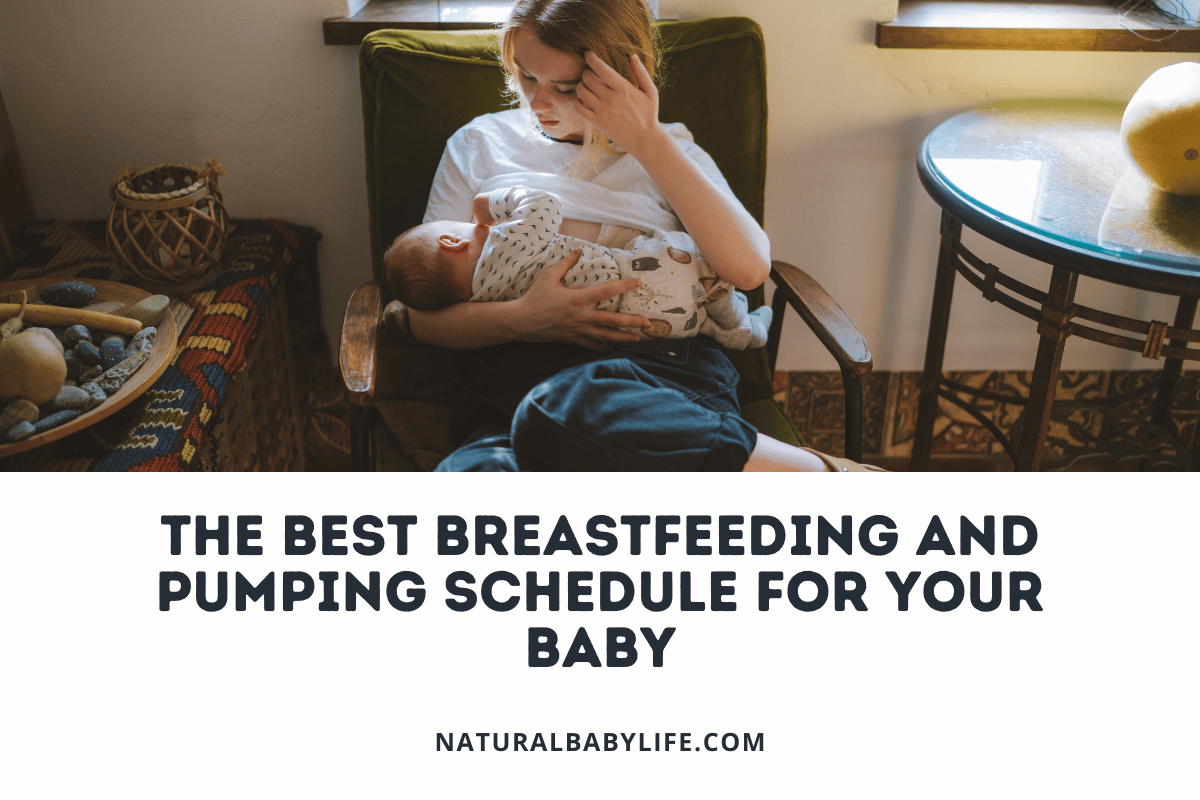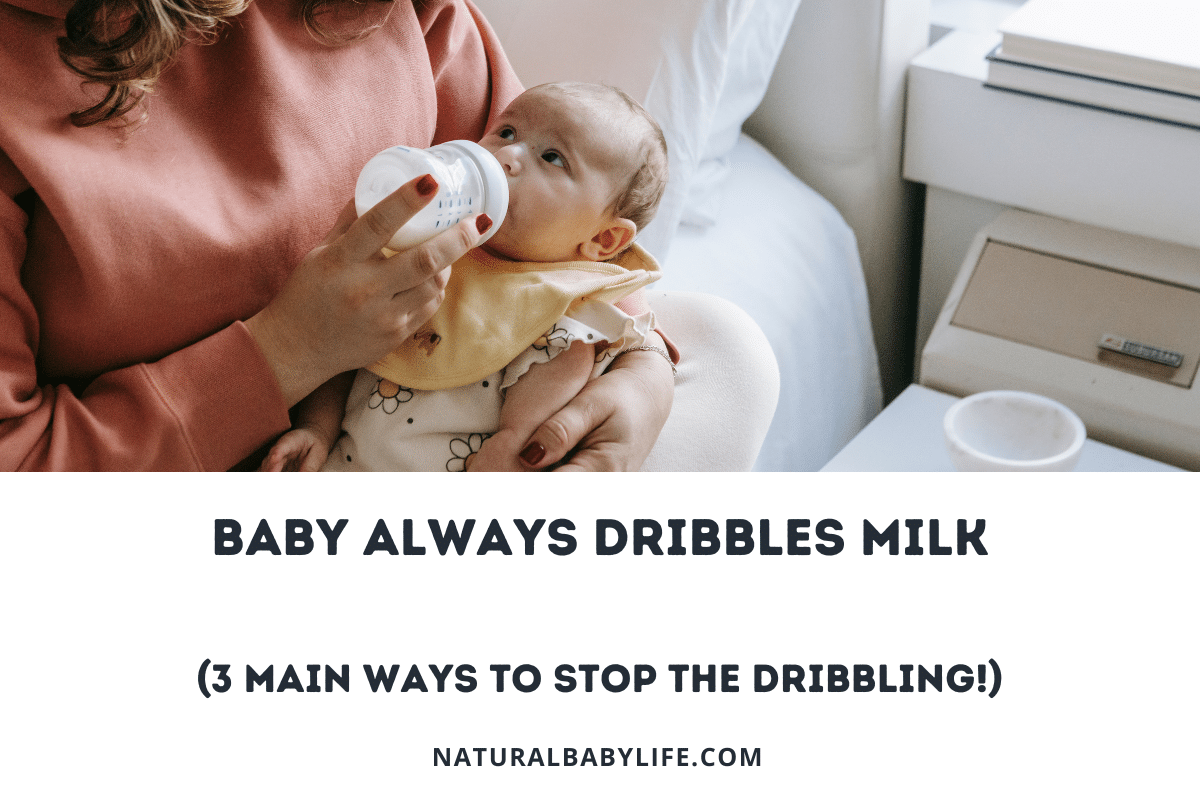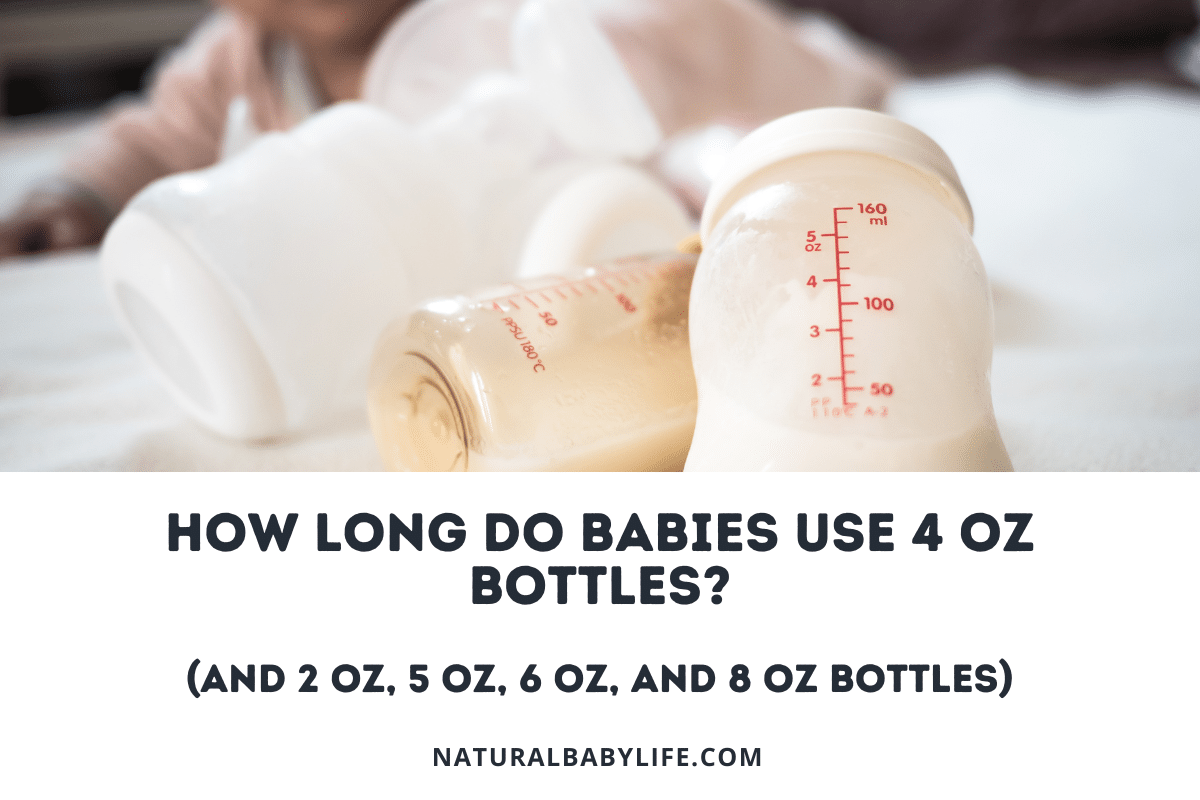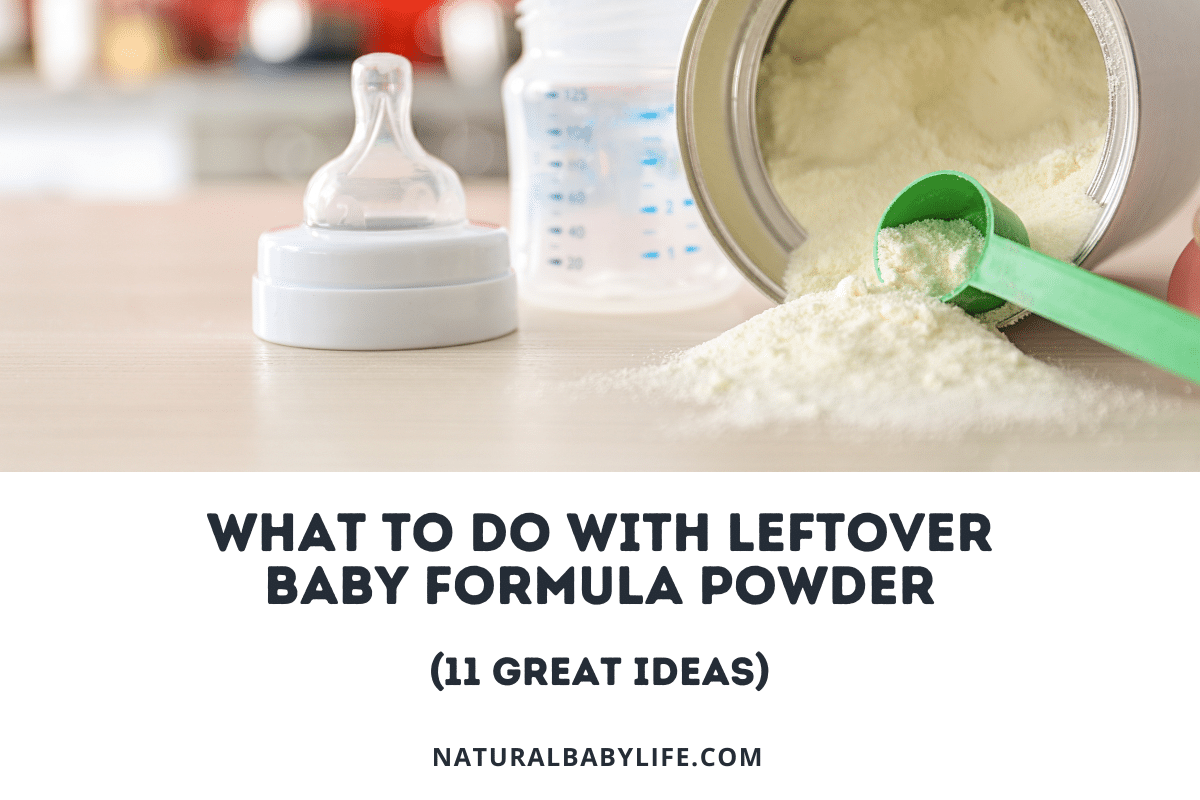If it’s your first time breastfeeding and pumping for your baby, you might be unsure about where to start and how to create the best schedule for your little one. Luckily, we’re here to help!
Many mothers will tell you that “breast is best,” and while that’s true, it should be done in a way that doesn’t tire you out.
This guide will help you work breastfeeding and pumping into your daily life and tell you everything you need to know about feeding your baby the natural way.
Table of Contents
What Is Breastfeeding?
The natural way to feed your baby is through breastfeeding. When you feed your infant this way, they latch on to your breast and ingest the milk produced by your body by sucking.
Your infant will probably begin nursing soon after birth, often within the first few hours. Colostrum will initially make up the majority of your milk supply.
This liquid, which is frequently thick and high in protein, keeps your infant hydrated and is rich in antibodies that also serve to protect your newborn from infection.
After the first several days of nursing, your colostrum will develop into mature milk. This process is known as your breast milk “coming in.”
What Is Pumping?
Pumping refers to using a breast pump to express milk from the breasts when it is not possible to breastfeed.
Many women decide to use a breast pump so they can continue to breastfeed their baby when they are away from them or if their infant is in the hospital.
Pumping is also important for breast stimulation and eases discomfort as milk builds up.
The Benefits Of Breastfeeding
For Your Baby
Breastfeeding is perfect for giving your baby the best start in life.
The milk you produce provides the ideal nutrition for your baby, containing the best combination of proteins, fats, and vitamins that will help them develop and grow.
Breast milk also contains antibodies that can help protect your baby from viruses and bacteria and even reduce the risk of allergies in later life.
Furthermore, it has been proven that babies who are breastfed for the first 6 months of their lives are less likely to develop respiratory problems and ear infections.
Breastfed infants are also at lower risk of diabetes and obesity, as breast milk contains the right amount of nutrients to help them grow at a normal rate.
For You
Breastfeeding doesn’t just benefit your baby; it can also benefit you! Firstly, breastfeeding can help a mother and baby bond through skin-to-skin contact and physical closeness as you relax together.
It can also save you time and money that can be better spent on your baby’s needs, as you won’t need to buy formula, warm bottles, or sterilize feeding equipment.
There are also some amazing physical benefits of breastfeeding that can improve your health.
Breastfeeding burns calories and releases the oxytocin hormone, so it can help you lose pregnancy weight and help your uterus return to its pre-pregnancy size.
It also reduces your risk of breast cancer, ovarian cancer, and osteoporosis.
Breastfeeding Timeline
While every baby is different, the following timeline is a good starting point when beginning to breastfeed your baby.
Of course, how much and how often your baby breastfeeds depends on what they need, but this is how breastfeeding should progress as your baby begins to grow.
For The First Week
During the first week, your baby will not need a lot of milk during each feeding, but they will need to be fed often.
Newborns typically want to be fed every 1 to 3 hours, but this is definitely a good thing as it helps increase your milk supply and teaches your baby how to suckle.
From 1 Week To 6 Months Old
As your baby’s stomach grows during the first several weeks and months, the intervals between feedings will start to increase.
Babies that are solely breastfed often eat every 2 to 4 hours on average. In a 24-hour period, your baby will breastfeed around 8 to 12 times.
Depending on the time of day, your baby may feed more or less frequently; this is perfectly normal. Some feeding sessions may be long, while others may be shorter.
At each meal, babies typically only take what they need and stop when they are full. When they’ve gotten enough milk, they should appear satisfied and sleepy after feeding.
From 6 To 12 Months Old
As your baby reaches 6 months old, how often and how long they breastfeed will change as they move on to more solid foods.
You just need to continue to follow your baby’s cues and breastfeed them when you think they are ready to eat.
During this time, make sure you continue to provide breast milk alongside solid foods so that they get all the nutrition they need.
From 12 to 24 Months Old
The time you spend breastfeeding should start decreasing as your baby grows into a toddler. Again, you just need to continue to look for signs of hunger and breastfeed as necessary.
Introducing Pumping

If you are unable to breastfeed your baby or be present when they need to feed, using a breast pump can be extremely beneficial for maintaining a milk supply.
In this section, we’ll go through everything you need to know about pumping.
Why You Might Need To Pump
There are many reasons why you might want to start pumping. It could be down to one of the following:
- Your baby is unable to latch.
- You find breastfeeding painful and uncomfortable, but still want to provide your baby with breast milk.
- You want to store milk for when feeding is inconvenient or when you’re not around to provide it, such as when you’re at work or running errands.
- You’re trying to increase your milk supply.
- You are starting to wean your baby.
- You need to drain the milk from your breast to alleviate pressure.
- You want to donate your breast milk to a milk bank.
Starting Your Pumping Session
Before you begin pumping, there are a few things you can do to make sure you’re getting the most milk out of each session:
- Relax – You’ll want to be completely relaxed when you start pumping, so find a quiet and comfortable place to sit while you pump. You can do some breathing exercises and play some soothing music to help you get in a calm state of mind.
- Encourage let-down – Let-down is a reflex in your breasts that ensures your milk is ready to flow out. By gently massaging your breasts and imagining your baby close to you, you can stimulate these nerves and hormones that encourage let-down.
- Make sure you have a good seal – Creating a good seal will ensure that you get as much milk as possible out of your pumping session. To do this, make sure the flange is the right size for your nipples and moisten it with water to create a better seal as suction begins.
- Start with low suction – You should start your pump at a low suction and increase it to your level of comfort when your milk starts to flow.
How To Pump
For moms who have never pumped before, the idea of pumping can be a little confusing and perhaps even daunting.
The following steps will help you ease into pumping and get started:
- First, wash your hands with soap and water to prevent the spread of harmful bacteria to your breast pump.
- Find a comfortable place to sit so you can start pumping.
- Bring a snack and a drink with you to keep your energy up and limit your movement.
- Assemble your pump kit.
- Center the flanges over your breasts with your nipple in the flange opening. This should create an air seal, which is important so make sure the flange fits well and the nipple is in the correct position.
- When double pumping, cup each flange to the breast by placing your thumb on top and your fingers below the flange. Switch to placing one arm across both breasts while turning the dials to maintain an airtight seal.
- Plug in your pump and turn it on.
- Start at a high speed with low suction until milk starts to flow, then reduce speed to medium and increase suction to what you’re most comfortable with.
How Much You Should Be Pumping
The amount of milk you can expect to produce will depend on a number of variables, including your baby’s age, the interval between the previous feeding or pumping, the time of day, the type of pump you’re using, how much experience you have with it, and how relaxed or anxious you are.
You should try to maintain full milk production of around 25 to 35 ounces per 24 hours if you are exclusively pumping.
Keep in mind that this won’t happen overnight, so be patient because reaching this amount may take a little time.
Creating Your Pumping Schedule
It makes sense that you would want to establish a routine if pumping is something you plan to do frequently.
You can plan your day this way and make sure you’re pumping the necessary amount of milk to feed or store for your baby.
Below are some suggestions for pumping schedules that can suit different lifestyles and needs for you and your baby.
Every mother is different, and some will need to pump more or less than others, but you can use these examples as a guideline when creating your own schedule.
Schedule For Exclusive Pumping
If you have a newborn that is exclusively fed with pumped breast milk, you’ll need to pump around 8 to 12 times per 24 hour period.
For each session, you should try to pump for 15 to 20 minutes.
This schedule will make sure you have enough milk for your baby while also giving you time to rest in between sessions:
- 7 am to 7.20 am
- 9 am to 9.20 am
- 11 am to 11:20 am
- 1 pm to 1:20 pm
- 3 pm to 3:20 pm
- 5 pm to 5:20 pm
- 7 pm to 7.20 pm
- 10 pm to 10:20 pm
- 3 am to 3.20 am
You won’t need to pump as regularly as your baby gets older, especially after they start eating solid foods.
You might be able to stop pumping during the night, but you should still make sure you space out your pumping sessions appropriately.
Regardless, you should always pump in the morning, when your supply is typically at its peak.
If you can still produce as much milk, you might be able to reduce the amount of time you spend pumping each time.
This schedule might work for you once your baby transitions to solid food in their diet:
- 7 am to 7.20 am
- 9 am to 9.20 am
- 2 pm to 2:20 pm
- 5 pm to 5:20 pm
- 8 pm to 8.20 pm
- 11 pm to 11:20 pm
- 5 am to 5.20 am
Schedule For Working Mothers
If you’re not exclusively pumping and working as you care for your baby, you’ll have to work pumping into your work schedule.
While breastfeeding parents may find themselves pumping less frequently at work than they do at home, as long as they pump for an appropriate amount of time each time, your pumping schedule at work will most likely resemble your typical breastfeeding schedule.
As a working parent, it is important to nurse as much as you can before and after work so you can spend less time pumping at work.
This schedule can work for someone working an average 9 to 5 job, but it can be changed for those working more irregular hours:
- 7 am (nurse)
- 10 am to 10:15 am (pump)
- 2 pm to 2:15 pm (pump)
- 5:30 pm (nurse)
- 8 pm (nurse)
- 11 pm (nurse)
- 2 am (nurse)
- 5 am (nurse)
Schedule For Power Pumping
For those looking to increase their milk supply, power pumping can be very effective.
This technique mimics the feeding babies will do during growth spurts, often referred to as “cluster feeding.”
Power pumping involves pumping for short but frequent bursts, usually several times in an hour.
If this is something you’re interested in doing, you can pick an hour or two a day to pump over the course of a week.
Try following this routine when power pumping to increase your milk supply:
- 20 minutes (pump)
- 10 minutes (rest)
- 10 minutes (pump)
- 10 minutes (rest)
- 15 minutes (pump)
- 10 minutes (rest)
- Continue this cycle for an hour or two.
Top Tips For Successful Pumping
Pumping can be difficult, but there are some things you can do to ensure that you’re getting the most out of your pumping sessions and schedule.
When pumping, consider these tips for success:
- Make sure you’re using the right size – If your pumping flange is too big, you want to be able to get a good seal, making it harder to pump enough milk.
- Double pump – Using two pumps or a double electric pump means you can pump both breasts at the same time, and ultimately increase your milk supply.
- Pump and nurse at the same time – If you’re pumping at home and you’re still breastfeeding, you can produce more milk by nursing and pumping at the same time.
- Use a hospital grade pump – These pumps can ensure maximum milk output and comfort.
Frequently Asked Questions
How Do I Know When My Baby Is Hungry?
Besides crying, babies might show a number of signs that indicate that they are hungry and need feeding. These signs include:
- Opening their mouths.
- Licking their lips.
- Sticking their tongue out.
- Moving their jaw, head, or mouth to look for your breast.
- Putting their hand in their mouth.
- Sucking on things.
- Being fussy.
How Do I Thaw Frozen Breast Milk?
To thaw frozen breast milk, place the milk in the refrigerator the night before you use it, and make sure your baby consumes it within 24 hours of thawing.
You should also heat your breast milk before you feed it to your baby.
You can do this by placing the bottle in a cup of warm water just before you give it to your baby.
Remember, you should never use hot water to warm your baby’s milk, or warm it up in the microwave, as this can burn your baby’s mouth and throat.
In Conclusion
When breastfeeding and pumping, it’s important to maintain a schedule, especially when pumping, so you can reach consistent milk production and continue providing those important nutrients to your baby.
With this guide, you’ll be able to do just that and settle into the best routine for you and your baby.










